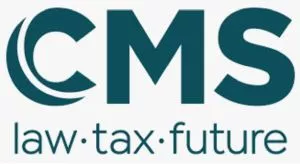Introduction
On 1 February 2024, the European Securities and Markets Authority (ESMA) published anarticle on the efficiency of funds focused on the United Nations Sustainable Development Goals (SDG), in which it questioned the fulfilment of their promises. ESMA's article defends the importance of this subject, highlighting that the existence of well-known sustainability frameworks such as SDGs in impact claims requires specific attention to ensure that products and strategies aiming at fostering such objectives stand true to their claims.
With EUR 74bn in assets under management in September 2023, SDG funds with a focus on the creation of a positive real-world impact by aligning with SDG are getting increasingly popular. Besides their growing popularity, these have nevertheless raised some impact washing concerns, the main concern being the possibility that these funds do not deliver what investors can legitimately expect when considering funds' claims.
In its article, ESMA has adopted a twofold approach:
- providing a methodology for identifying SDG funds and their importance on the market, and
- comparing SDG and non-SDG fund characteristics.
Methodology to identify SDG funds
In the absence of any universally accepted definition, ESMA identified SDG funds as investment funds making a claim relating to the SDGs in their regulatory communication, namely through their name, investment strategy or KIID/KID. ESMA notably highlighted that, among identified SDG funds, 44% were launched after 2020. Over half of companies (52%) taking part in the United Nations Global Compact initiative as of February 2023 joined it between 2020 and the beginning of 2023, which may raise impact-washing concerns as it coincides with the rise of scrutiny around private sector actors' contribution towards the sustainable transition and potential negative impact on the environment and society.
Comparison of SDG and non-SDG fund characteristics
ESMA's article further analyses SDG funds' performance and underlines that SDG funds do not seem to display greater alignment with the UN SDGs compared to non-SDG funds. It notably highlights that SDG funds:
- do not hold significantly more companies participating in the UN Global Compact or targeting specific SDGs;
- invest slightly more in sovereign debt issued by countries with high SDG index scores, but the difference remains limited;
- do not have a higher exposure to development banks; and
- do not perform better in terms of Positive Aligned Investments indicators than their non-SDG peers.
Conclusion
Whereas the size of SDG funds tripled between 2020 and 2023, ESMA's findings raise questions of whether SDG funds deliver on their commitment to investors and legitimate impact-washing and investors protection concerns. While the article only provides a first assessment of SDG funds' alignment with United Nations SDGs, it further demonstrates the need to take steps beyond simply excluding firms based on sectoral or geographical characteristics, and to carefully evaluate and select the assets that have been proven to concretely contribute to specific SDGs.
Overall, the aim for the future is to set up clear rules to ensure that sustainability frameworks, such as the SDGs, are not misused when employed as a reference tool for sustainability objectives.
The content of this article is intended to provide a general guide to the subject matter. Specialist advice should be sought about your specific circumstances.


